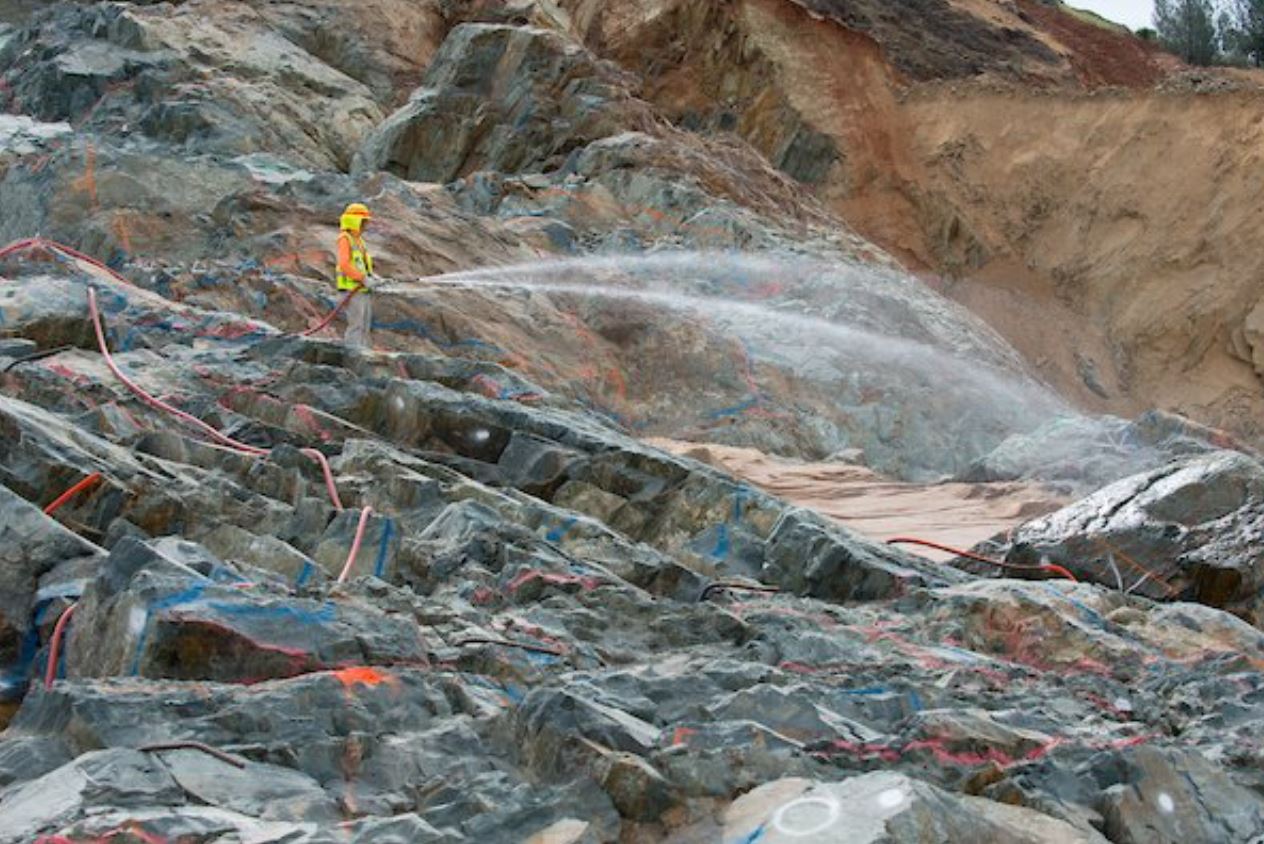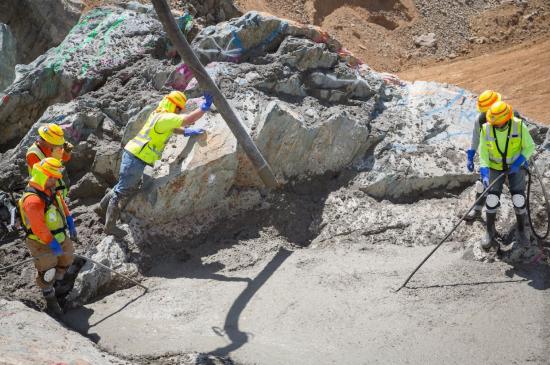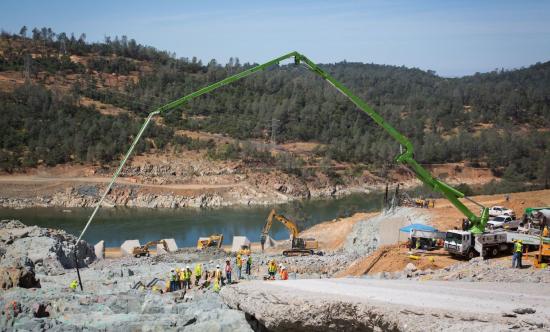4.2.3: Oroville Spillway Recovery, Plans and Design
- Page ID
- 2862
While the integrity of Oroville Dam itself was never threatened, construction crews worked tirelessly making repairs once the emergency spillway flows stopped. “There have been multiple takeaways from the dam crisis,” says Bill Croyle, the Department of Water Resources Director, “the lessons learned is helping the damn safety industry get real with their infrastructure and ensure that inspections are carried out with the latest technology.” The main repair contractor, Kiewit Corp, won the $275.4 million dollar contract in April, beating two other competitors. The company has considerable experience with dam projects, including the upgrade of Folsom Dam in the Greater Sacramento Region and its auxiliary spillway.
I. Structural Objectives
Since the incident, the Department of Water Resources has two significant objectives they wish to meet within the next year, all posted on their Oroville Spillway Recovery page:
- Ensuring public safety
- Ensuring the integrity of the dam and its associated structures.
II. Future Repair Stages
By November 1st , the spillway can release flows of 100,000 ft3 /sec if necessary during winter months. The Department of Water Resources plans on reinforcing the hillside with a cutoff wall into bedrock, keeping erosion that can occur in the future from cutting back into the emergency spillway weir. On March 6th , heavy equipment began removing debris from the diversion pool as employees from the Department of Water Resources and U.S. Army Corps of Engineers Geologists surveyed the spillway. Currently, the Department of Water Resources wished to return both the gated flood control and emergency spillways to their original design capacity, capable of passing maximum flood waters at Lake Oroville.
a. Gated Flood Control: Upper Chute
Replacement of the upper chute area shown in orange below is scheduled to be completed by November 1, 2017. Any chute slabs and walls not replaced will be anchored and finished during the next construction season. The the right, concrete is being poured onto the chute on June 7, 2017.


b. Gated Flood Control: Lower Chute
The damaged spillway structure downstream of the severely eroded area will be demolished and replaced, including reinforcement of adjacent slopes. On March 5th, specialized roller-compacted concrete was applied between the wall and the spillway weir, allowing construction to occur in heavily eroded areas. Below are progress photos along the Lower Chute taken on June 7th, 2017. The first round of concrete is being poured onto the Lower Chute.


d. Emergency Spillway
The Department of Water Resources expects the spillway to be capable of releasing flows of 100,000 ft3 /sec if necessary during winter months by November 1st , 2017. Other goals are:
- Reinforcing the hillside with a cutoff wall into bedrock, keeping erosion that can occur in the future from cutting back into the emergency spillway weir
- Place roller compacted concrete on the existing weir creating a buttress to adjust for future flood flows and possible seismic loading conditions
- Place roller compacted concrete downstream of the weir to direct flood floods and to create a slash pad to prevent erosion of the underlying bedrock


